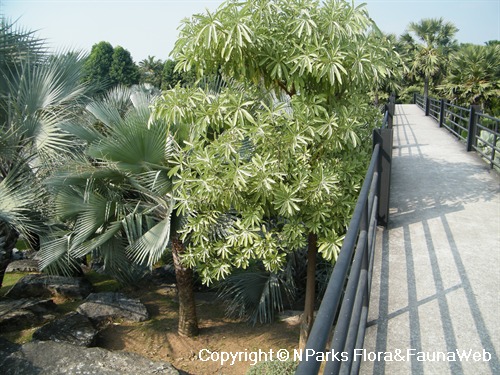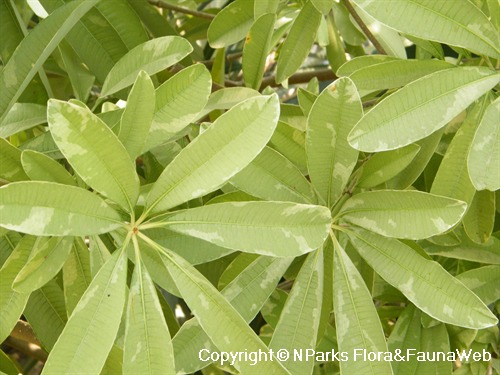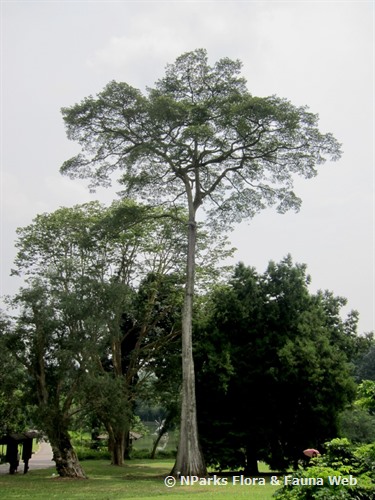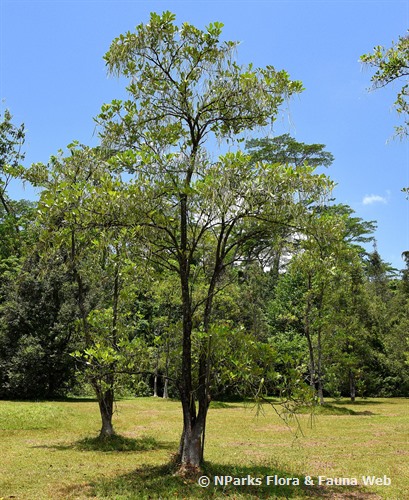
Back
Alstonia scholaris (Variegated)
| Family Name: | Apocynaceae |
It is a cultivated variety of Alstonia scholaris which is highly ornamental due to the cream-green mottled patterns on the leaves.
Name
Classifications and Characteristics
| Plant Division | Angiosperms (Flowering Seed Plants) |
|---|---|
| Plant Growth Form | Tree |
| Lifespan (in Singapore) | Perennial |
| Mode of Nutrition | Autotrophic |
| Plant Shape | Tiered |
Biogeography
| Preferred Climate Zone | Tropical |
|---|---|
| Local Conservation Status | Non-native (Horticultural / Cultivated Only) |
Description and Ethnobotany
| Growth Form | It is a pagoda-shaped tree which produces sticky white latex when injured. |
|---|---|
| Foliage | The leaves arranged in whorls of 4-8 and have an attractive cream-green mottled pattern. Intrapetiolar stipule is present at the base of the petiole. |
| Etymology | Latin Alstonia, commemorates Dr. Charles Alston (1685–1760), a professor of botany at Edinburgh University. Species epithet 'scholaris, in Latin, means school, referring to the wood being made into slates for writing. |
Landscaping Features
| Desirable Plant Features | Ornamental Foliage |
|---|---|
| Landscape Uses | Suitable for Roadsides, Shade Providing Tree / Palm |
| Usage Hazard - Cons | Irritant - Sap |
Plant Care and Propagation
| Light Preference | Full Sun |
|---|---|
| Water Preference | Moderate Water |
| Plant Growth Rate | Moderate |
| Rootzone Tolerance | Fertile Loamy Soils, Well-Drained Soils |
Image Repository
Others
| Master ID | 30577 |
|---|---|
| Species ID | 4886 |
| Flora Disclaimer | The information in this website has been compiled from reliable sources, such as reference works on medicinal plants. It is not a substitute for medical advice or treatment and NParks does not purport to provide any medical advice. Readers should always consult his/her physician before using or consuming a plant for medicinal purposes. |




_lowres.jpg)
_lowres.jpg)